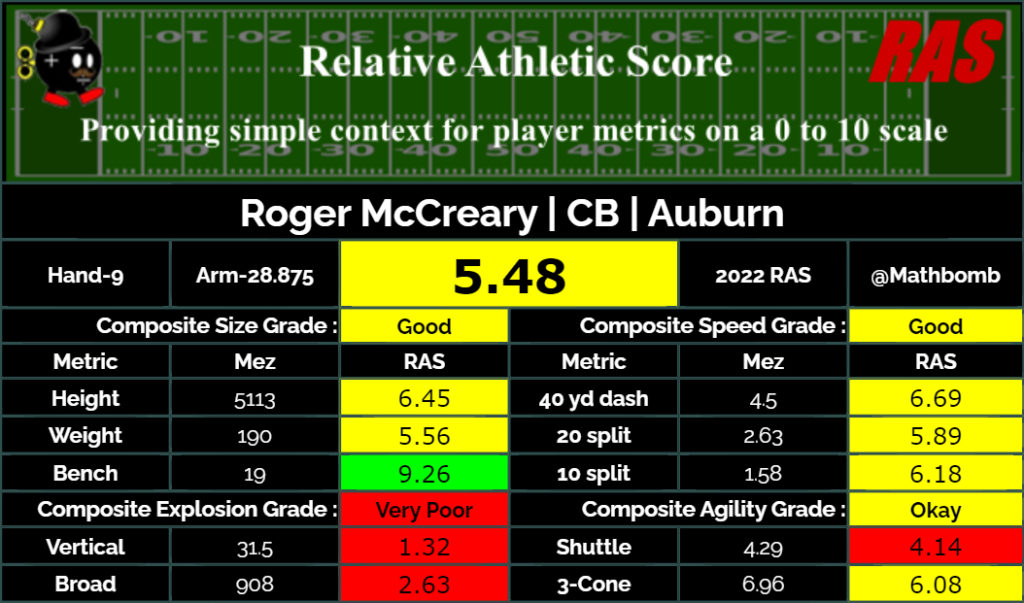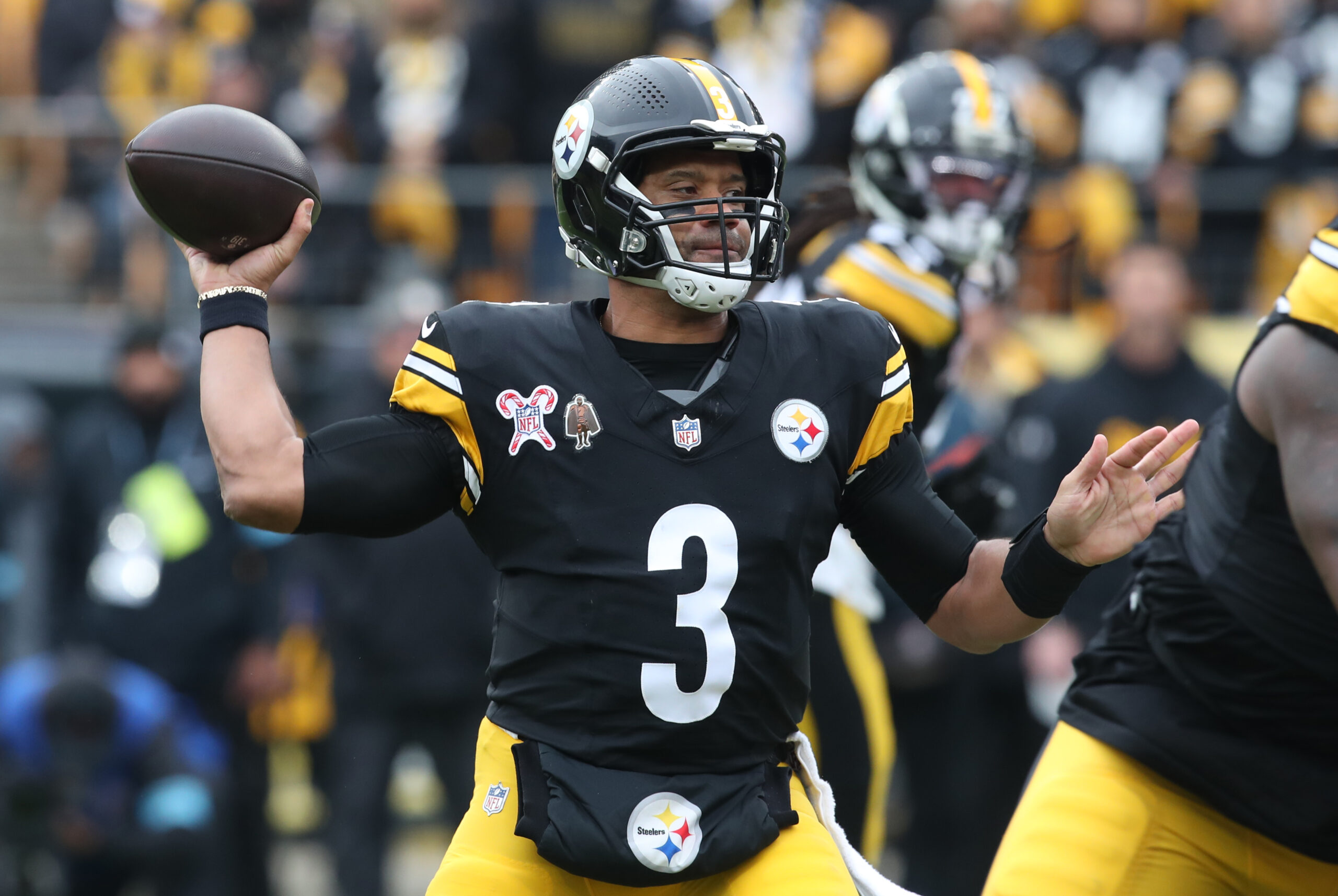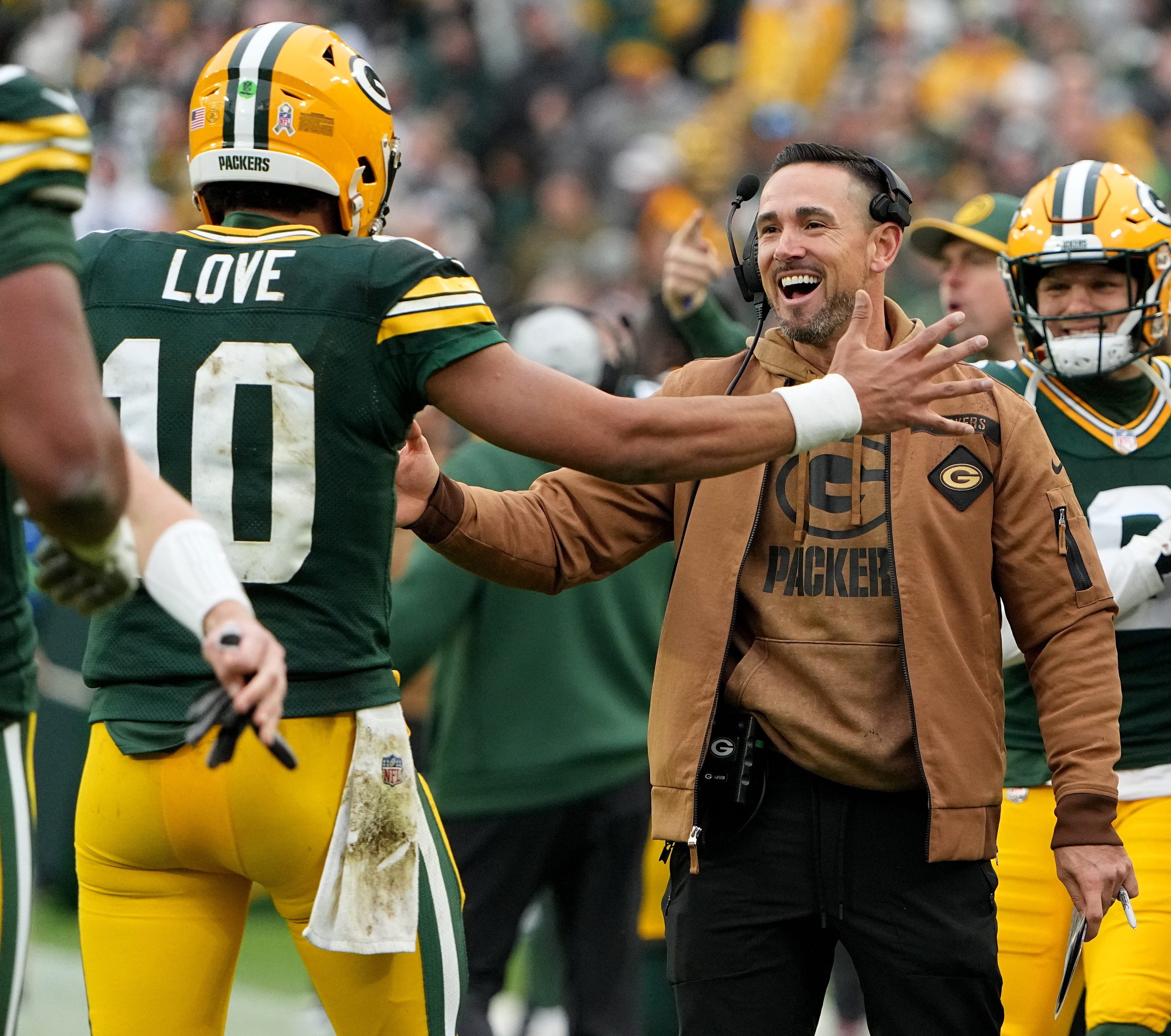Expert Analysis
4/23/22
6 min read
Roger McCreary Can Thrive in NFL Despite Physical Limitations

Even in a league where two-high zone coverages are in vogue, the most valued asset at the cornerback position remains the ability to lock down opposing wide receivers in man coverage.
Having a corner who can thrive playing on an island time and again opens an array of avenues for defenses that are increasingly reliant on disguise of both their coverages and blitz packages to slow down opposing passing attacks in an era where the deck is stacked firmly in favor of the offense.
It is in part the proficiency in that area of the game that will see Cincinnati's Sauce Gardner and LSU's Derek Stingley Jr. come off the board in the first round of next week's NFL Draft.
Gardner is the modern-day archetype at the position. Standing at over 6-foot-2 and 190 pounds while running a 4.41 40-yard dash, his combination of size and speed is ideally suited to the NFL in 2022, and he is also in the 97th percentile, per Mock Draftable, for arm length, which factors into scouts' evaluations more heavily than a prospect's height.
Stingley, at least in 2019, excelled despite possessing arms of just over 30 inches long, putting him in the 22nd percentile for corners, and one of his former SEC counterparts, Auburn's Roger McCreary, will also be hoping NFL teams look past his physical deficiencies and focus on how he performed when matched up one on one with receivers at the highest level of college football.
McCreary will enter the league having recorded six interceptions and 30 pass breakups for the Tigers, 14 of which came in his final season in 2021.
However, with a Relative Athletic Score of 5.48 and arm length under 29 inches, the overriding question surrounding this likely second-round pick will concern whether he can continue to overcome his athletic shortcomings at the highest level.
How important is arm length?
A cursory glance at the cornerbacks to be named AP first-team All-Pro in the last five seasons appears to vindicate the thought process that arm length is key to excelling at the position in the NFL.
Five of the seven players to receive that distinction since 2017 had arm length above the 50th percentile for cornerbacks.
However, the two that did not meet that threshold serve as outliers that carry great significance.
Stephon Gilmore was named first-team All-Pro in 2018 and 2019 – when he also won Defensive Player of the Year – despite having 34th percentile arm length, while Xavien Howard was first-team All-Pro in 2020.
Howard's arm length is in the 42nd percentile but that did not preclude him from racking up 10 interceptions in 2020 and a further five in 2021, numbers that should be encouraging for a prospect like McCreary who demonstrated his prowess for making plays on the ball in four seasons with Auburn.
McCreary an SEC shutdown
McCreary's 14 pass breakups were the most among all Power 5 defenders in 2021, while only three players in the SEC registered more interceptions than his five over the course of the last two seasons.
However, his impact in coverage extended beyond breaking up passes at the catch point. Indeed, according to Pro Football Focus, McCreary recorded 25 forced incompletions since 2020, the most in college football over that period.
Those raw numbers in isolation would likely not be enough to convince NFL teams McCreary is worthy of a high second and perhaps even early first-round pick.
As always, it is the tape that trumps everything else, and McCreary's is that of a corner who has the feel for the game to make teams looking for a starting corner forget about his apparent lack of elite physical tools.
Winning the mental game
Ranked 34th on The 33rd Team big board, it is in the mental side of the game in which McCreary consistently excels.
Matched up against first-round receivers throughout his time at Auburn, McCreary is, as his scouting report on The 33rd Team details, "immensely patient".
McCreary rarely rushes to open his hips to turn and run with receivers and, when he does turn, he demonstrates the hip fluidity to stay in phase with wideouts.
On this play against Penn State, McCreary is communicating right up until the snap of the ball but quickly switches focus back to his assignment covering Jahan Dotson, flips his hips and stays in perfect coverage downfield, using the sideline as an extra defender to prevent any chance of a deep completion.
Key to his success in shutting down Dotson was McCreary getting his hands on the Penn State star early in the route, and that physicality is a consistent feature of his game.
Despite his size, McCreary embraces contact with receivers and, while he can be out-jumped at the catch point, frustration is frequently the result for wideouts faced with his coverage who do not possess an obvious height advantage.
Ole Miss' Dannis Jackson can testify to that. Here, in the Rebels' matchup with Auburn, McCreary turns his hips in a composed and controlled manner before locking both hands on Jackson, with the subsequent hand fight ending in a stalemate that forces Matt Corral to toss the ball out of the endzone.
Whether he's turning and running with defenders downfield or locking them up with his hands, McCreary is a prospect defined by his lack of panic, which is also a critical aspect of his ability to disrupt passes at the catch point.
McCreary can anticipate route breaks and has shown recovery speed to force incompletions with plays on the ball when receivers do get free of his coverage in the short and intermediate areas.
His composure shone through on this play against Mississippi State, McCreary using his left arm to just about stay in phase after Makai Polk gained inside leverage going over the middle, efficiently closing the gap and getting his arm in front of the throw to prevent an incompletion.
McCreary may not be anywhere close to being the fastest corner in the draft, but he has the speed of thought to allow him to make sound decisions in coverage.
Though his arm length is severely lacking, he plays with a mindset that belies his physical frame, ensuring it should be an afterthought when teams who have him on their radar come to make their decision on a corner who has the press and man coverage skills to survive in the NFL for a long time.









